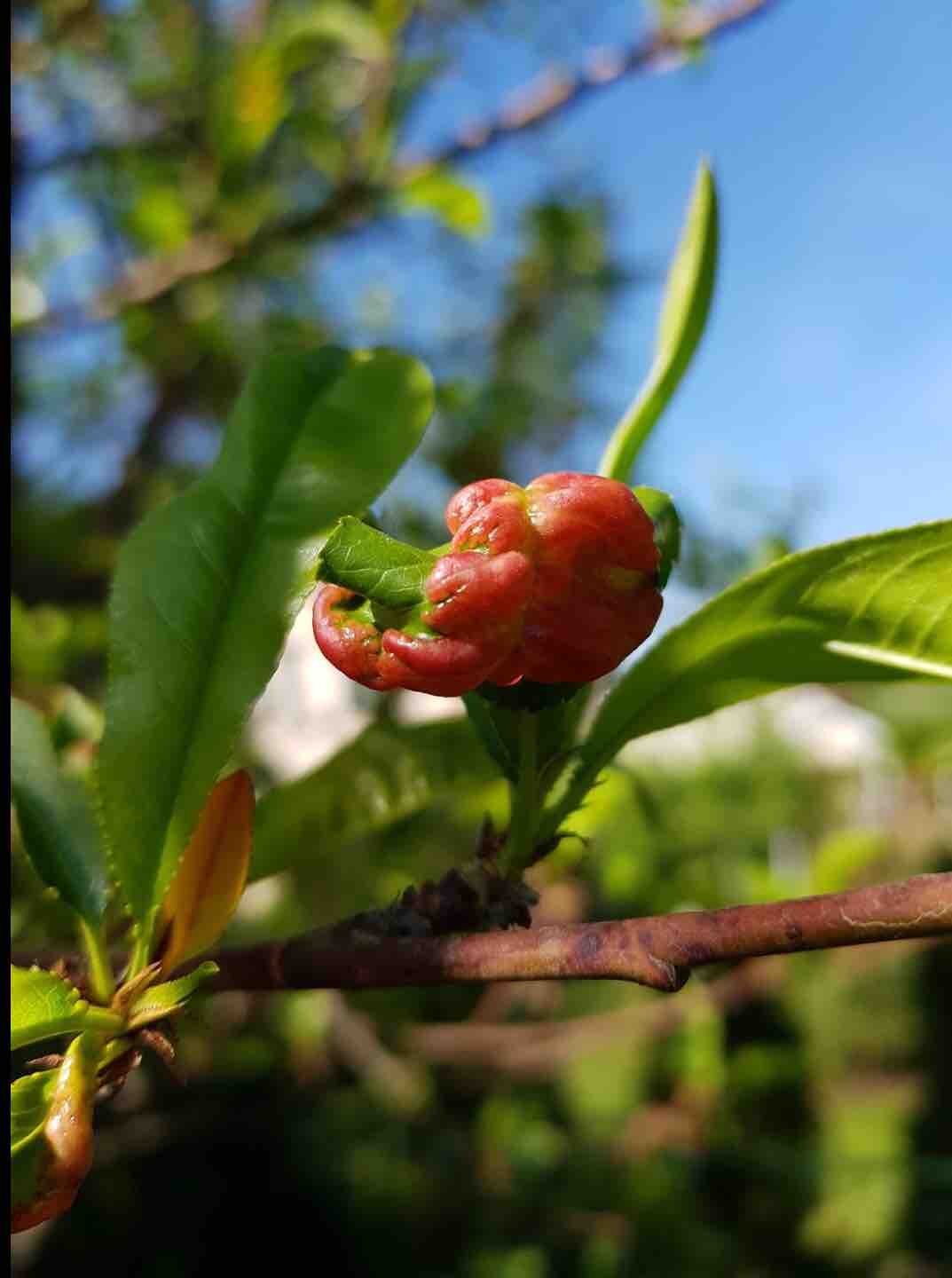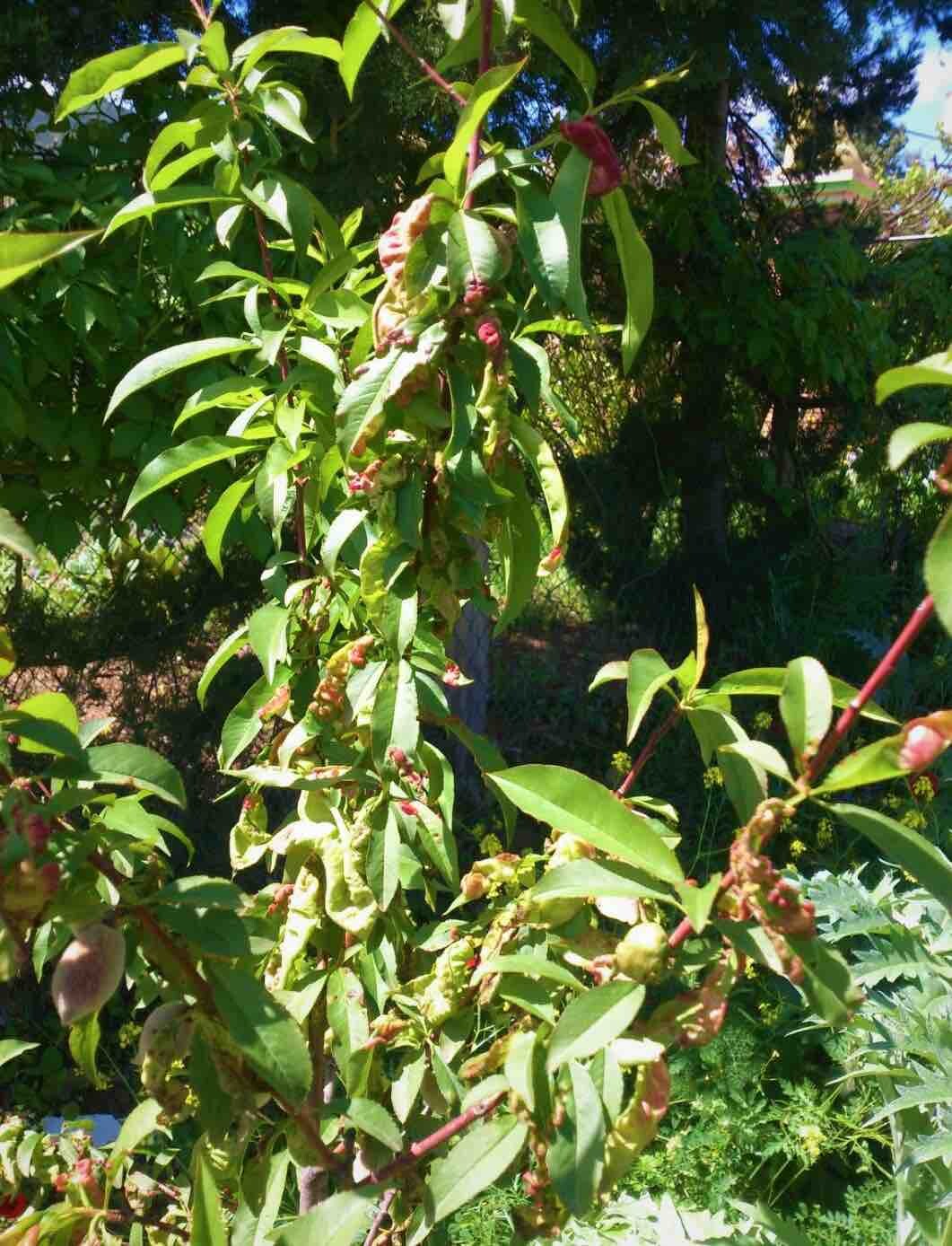Feuille bouclée de pêche
Peach, plum, nectarine, and almond
Peach leaf curl is caused by the fungus Taphrina deformans and is a common fungal disease that infects several plant species. Though, peaches are the most susceptible crop and hence the name.
The pathogen can be found on the host’s branches, buds, and bark. It can survive harsh weather conditions, withstanding summer’s high temperatures and prolonged dryness.
At the end of a dormancy period, the fungus activity extends due to significant wetting events. As the weather changes and the flower buds swell, water splashes from irrigation or rain and causes fungus spores to reach the buds. That’s where the infection takes place, despite the fact that no green tissue is present.
After the pathogen enters the host, it stimulates cells, which leads to abnormal growth. Visual symptoms first appear as reddish areas on newly emerged leaves. With time, swelling and leaf distortion cause fungus spores to break outside, release into the air, and infect new tissues.
As the disease progresses, leaves may fall and be replaced by a new set of healthier leaves if a period of low humidity is present during their development. The loss of leaves during springtime results in decreased fruit production, defoliation, and could expose branches to sunburn.
Le contrôle de la maladie tourne autour de la prévention. Il est assez courant de réaliser 2 traitements de pulvérisation chronométrés en fonction de la phase physiologique de la croissance. Le premier traitement est appliqué avant le gonflement des bourgeons et le second traitement est appliqué plus près du gonflement du bourgeon.
Les produits utilisés dans une ou plusieurs régions du monde peuvent contenir les ingrédients suivants :
dithianon, captan, cuivre- fongicide à base, et mélange bordeaux.
*Names marked in red are considered to be highly poisonous to beneficial insects.
*Names marked in green are considered to be organic and IPM (integrated pest management) compatible.
Image Gallery

